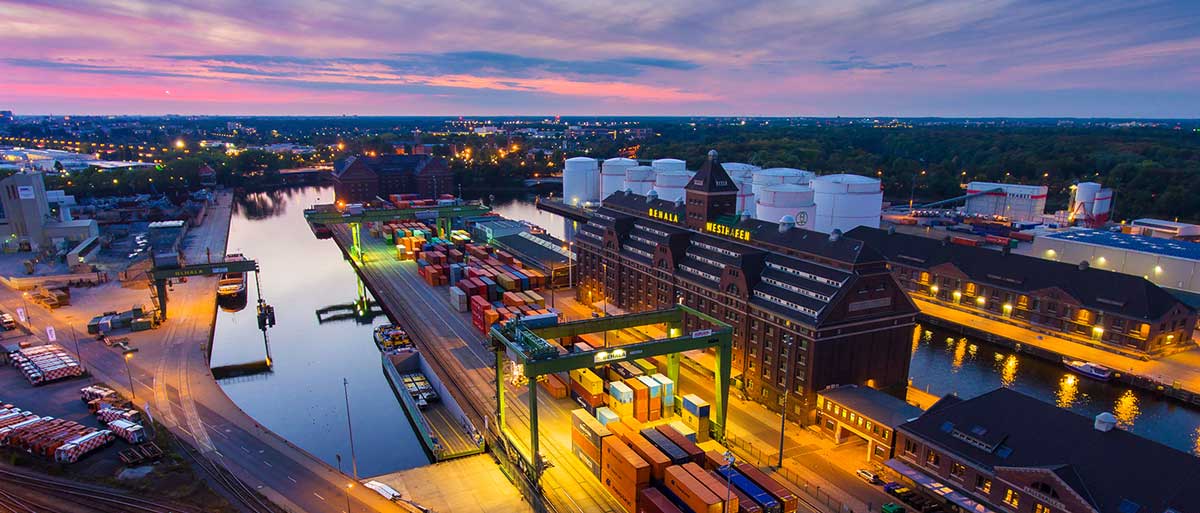 New construction developments in German seaports and inland ports have increased slightly in 2023. This is shown by a recent study by the integrated logistics property consultant Logivest on the situation within the port areas. Of the total of 3.8 million square metres of new construction space in 2023, around 5.8 percent was implemented within port areas last year. In comparison, this figure was only around 3.3 percent in 2022, with a significantly higher volume of new construction of around 5.2 million square metres.
New construction developments in German seaports and inland ports have increased slightly in 2023. This is shown by a recent study by the integrated logistics property consultant Logivest on the situation within the port areas. Of the total of 3.8 million square metres of new construction space in 2023, around 5.8 percent was implemented within port areas last year. In comparison, this figure was only around 3.3 percent in 2022, with a significantly higher volume of new construction of around 5.2 million square metres.
Logivest had already conducted a comprehensive survey of new construction activity in German ports in 2022 and identified massive deficits. Only 1.2 million square metres, or just 4.6 percent of the logistics space created in Germany from 2017-2021, was located within German sea and inland ports at the time. ‘Even if we see a slight increase in new construction projects in the ports in 2023, we are still talking about a massive shortage of space here. In line with the national port strategy, the targeted expansion of port-related infrastructure should therefore be driven forward and the focus of potential land near ports should continue to be on logistics use,’ says Kuno Neumeier, CEO of the Logivest Group.
Nevertheless, the logistics property expert sees the increase as a step in the right direction, especially as the major projects could benefit from new designations in 2023. At around 70,000 square metres, DLH's largest project development for A.P. Moeller Maersk is being built on a greenfield site in Bremerhaven as part of a leasehold agreement. The first hall section of P3 Logistics, measuring around 30,000 square metres, will be realised on the newly created area of the Jade-Weser Port. ‘Of course, brownfield revitalisations are becoming increasingly relevant, as the developments of the last two years show, but we need new space in port areas in particular in order to meet demand and make our ports competitive,’ says Neumeier. The growing demand for port space is also reflected in the approach of project developers and investors. While the German logistics property market was generally cautious in 2023, larger speculative developments can also be found in the port areas.
The fact that the sustainability factor is also playing an increasingly important role in the port area is demonstrated by the larger new-build projects in particular, which are being developed in accordance with the latest sustainability standards and ESG guidelines and in some cases equipped with full-surface rooftop photovoltaic systems.
Due in part to the infrastructure on offer, the industry focus for port-related space in the past years 2022 and 2023 was primarily on logistics service providers, which in turn concentrated mainly on the established seaports such as Hamburg, Bremen, Bremerhaven, Duisburg and Wilhelmshafen. ‘The seaports and inland ports are a decisive economic factor for Germany as an export nation, and trimodality, i.e. the interlinking of road, rail and water, is a central building block for sustainable and future-proof logistics,’ says Neumeier.


